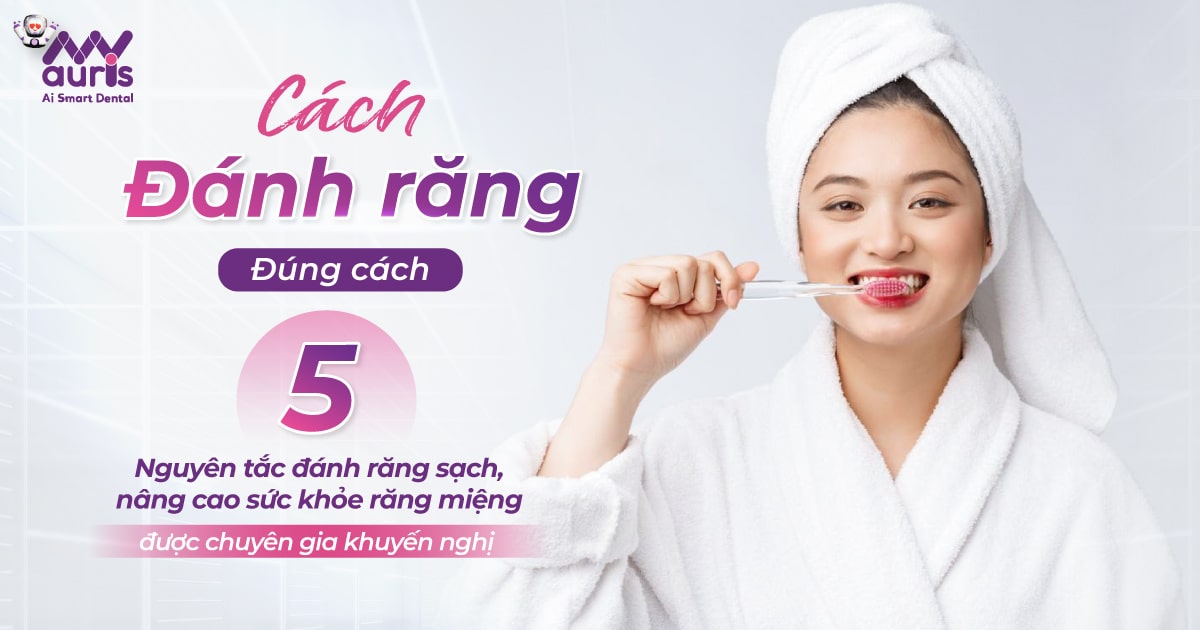Brushing teeth is a daily habit of many people. However, not everyone knows how to brush their teeth properly to protect their oral health. To understand how to brush your teeth properly and the principles of oral hygiene, let’sMy Auris learn through the following article.
Benefits of brushing teeth properly
The habit of brushing teeth every other day not only helps to clean and sanitize the oral cavity but also brings many important benefits to tooth health mouth and body. Here are the benefits of brushing your teeth properly:
- Protect your teeth and prevent gingivitis: brushing your teeth helps clean plaque and bacteria on teeth and gums, reducing the risk of tooth decay, receding gums, gingivitis,…
- Keep your breath fresh: brushing your teeth properly will remove impurities that cause bad breath, thereby helping your breath stay fresh and more confident.
- Reduces the risk of cardiovascular disease: a study shows that brushing your teeth regularly can reduce the risk of gingivitis, help limit bacteria from moving into the blood, and reduce the risk of heart attack by up to 50%.
- Strengthens the immune system: oral bacteria can cause inflammation and negatively affect the body’s immune system. Brushing teeth helps eliminate these harmful bacteria, thereby strengthening the immune system.
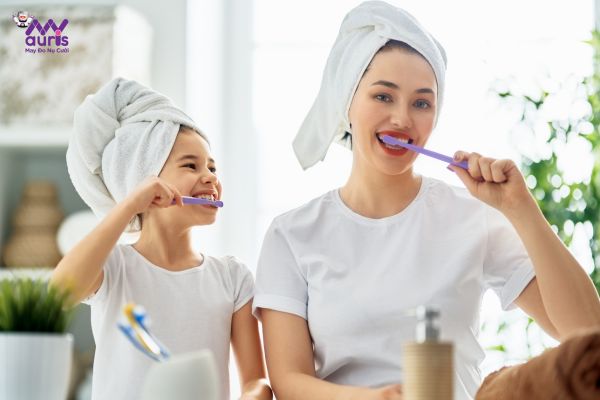
In order to brush teeth properly, people should follow the following important principles to ensure oral health:
Choose the right toothbrush and toothpaste
Before brushing your teeth, you need to choose a toothbrush that is appropriate for its size and oral health. Priority should be given to choosing a toothbrush with soft bristles to remove plaque, protect gums, and have a compact brush for easy access to deep areas inside the mouth.
Choose toothpaste suitable for your condition and oral health. Priority should be given to choosing toothpaste containing fluoride to protect tooth enamel and prevent tooth decay. If you have sensitive teeth, you should choose toothpaste for sensitive teeth. There are other types of kettlesWhitening and bleaching will be suitable for those with yellow and dull teeth.
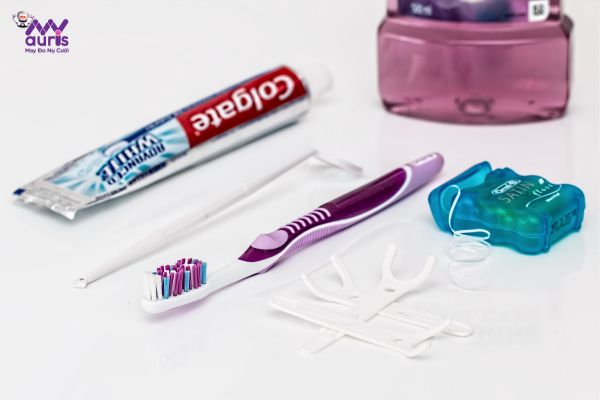
Don’t brush your teeth too fast
Brush your teeth for at least 2 minutes to ensure your teeth, gums and tongue are thoroughly clean. If you’re worried, invest in an electric toothbrush with an automatic timer function or use a stopwatch.
Brush your teeth properly and with the right technique
Place the brush at a 45-degree angle with the gum line, the toothpaste part is in contact with the teeth and gums. Gently rotate the chewing surface, the outer and inner surfaces of both the upper and lower jaws. When brushing your teeth, you should not brush your teeth horizontally because it easily erodes tooth enamel. At this time, you should brush in a circular motion or up and down along the teeth depending on each person’s habits.
Don’t brush your teeth too hard
The most important thing in brushing your teeth is gentle and precise brush movements. This will help you ensure that you do not cause damage or trauma to the soft tissues in the oral cavity. Take the brush to hard-to-reach places deep in the oral cavity for more effective cleaning. When brushing your teeth, brush the entire surface using very gentle movements.
Clean your tongue with a brush or tongue scraper
Not only brushing your teeth, but cleaning your tongue is also one of the essential steps in maintaining and taking care of oral health. Many people focus on cleaning their teeth but ignore or forget the step of cleaning their tongue, which also causes harmful bacteria on the tongue and brings unpleasant breath.
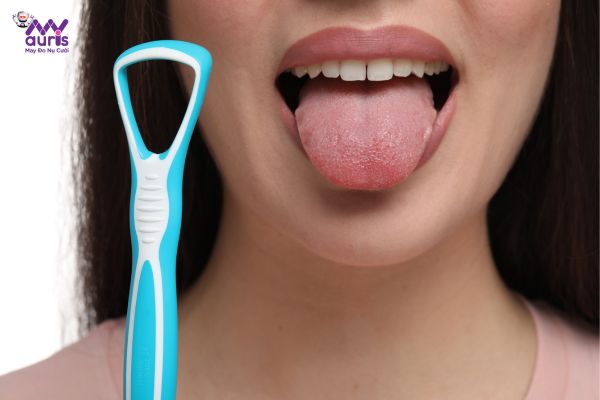
Instructions on how to brush your teeth properly
The correct way to brush your teeth is done in a sequence of steps. There are differences in the way adults and children brush their teeth.
How to brush teeth properly for adults
Adults who brush their teeth properly can follow these 7 simple steps:
- Step 1: Rinse mouth with clean water for 30 seconds to remove plaque and leftover food particles in the oral cavity.
- Step 4: Brush both the inner and outer surfaces of the upper and lower teeth in an up and down direction.
- Step 5: Brush at a 45-degree angle to the tooth surface and gums and then brush the chewing surface of the teeth.
- Step 6: Brush or use a tongue scraper to clean the tongue after brushing style=”font-weight: 400;”>Step 7: Brush the tooth surfaces, gums and tongue for 2 minutes. Then, spit and rinse your mouth with clean water.
How to brush teeth properly for children
Parents should choose toothbrushes and toothpaste suitable for young children. To guide children to brush their teeth properly, parents should not put pressure on children to follow each step as follows:
- Step 1: Take a pea-sized amount of toothpaste
- Step 2: Instruct your child to gently brush their teeth and clean their tongue.
- Step 3: Stop the timer to time the child’s brushing time
- Step 4: Child spit and rinse with clean water.
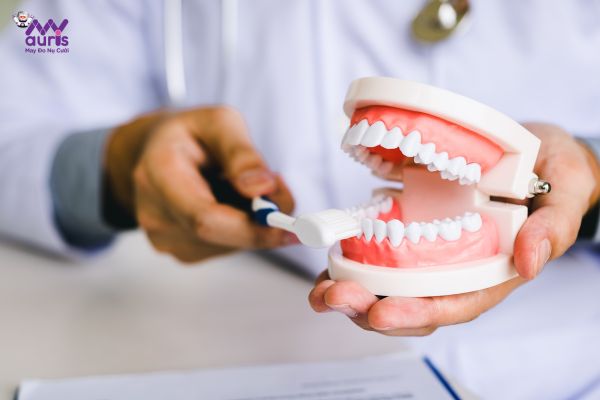
Some notes on how to brush teeth properly
In addition to the ways and steps of brushing teeth, people also need to pay attention to the following:
- Brushing time: the most appropriate brushing time is about 2 minutes/time. This is the time recommended by dental experts to ensure cleaning of the entire tooth and gum surface at the same timeoh very carefully.
- Tooth brushing frequency: At least 1 day, you should brush your teeth twice in the morning after waking up and at night before going to bed. However, if you have a habit of eating a lot of sugar and highly sticky foods, you should brush your teeth one more time at noon or after eating.
- Combining the use of dental floss: using dental floss before or after brushing your teeth depends on the purpose of use and habits of each person. Using dental floss increases the ability to remove plaque and food particles in the oral cavity. From there, improve better oral health.
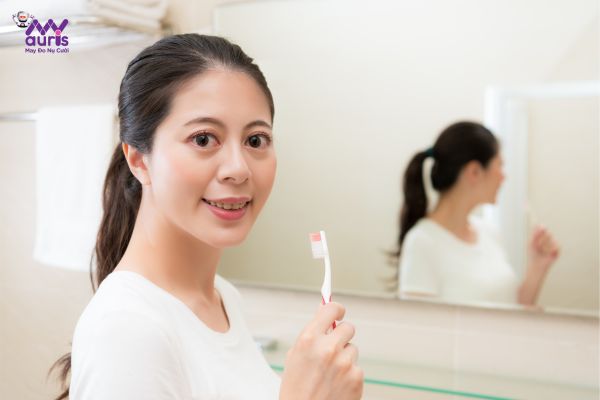
Hopefully the information in the article on how to brush teeth properly will help people gain more experience in oral care. From there, follow proper hygiene and cleaning principles to best protect and improve oral health. Also, don’t forget to have regular dental check-ups.
Anh Thy


